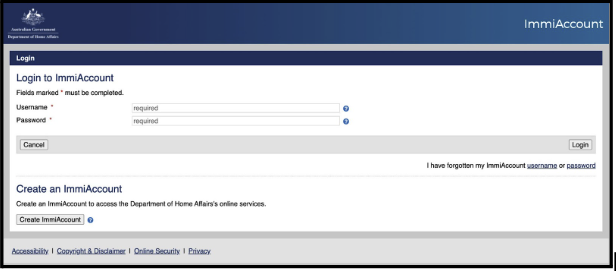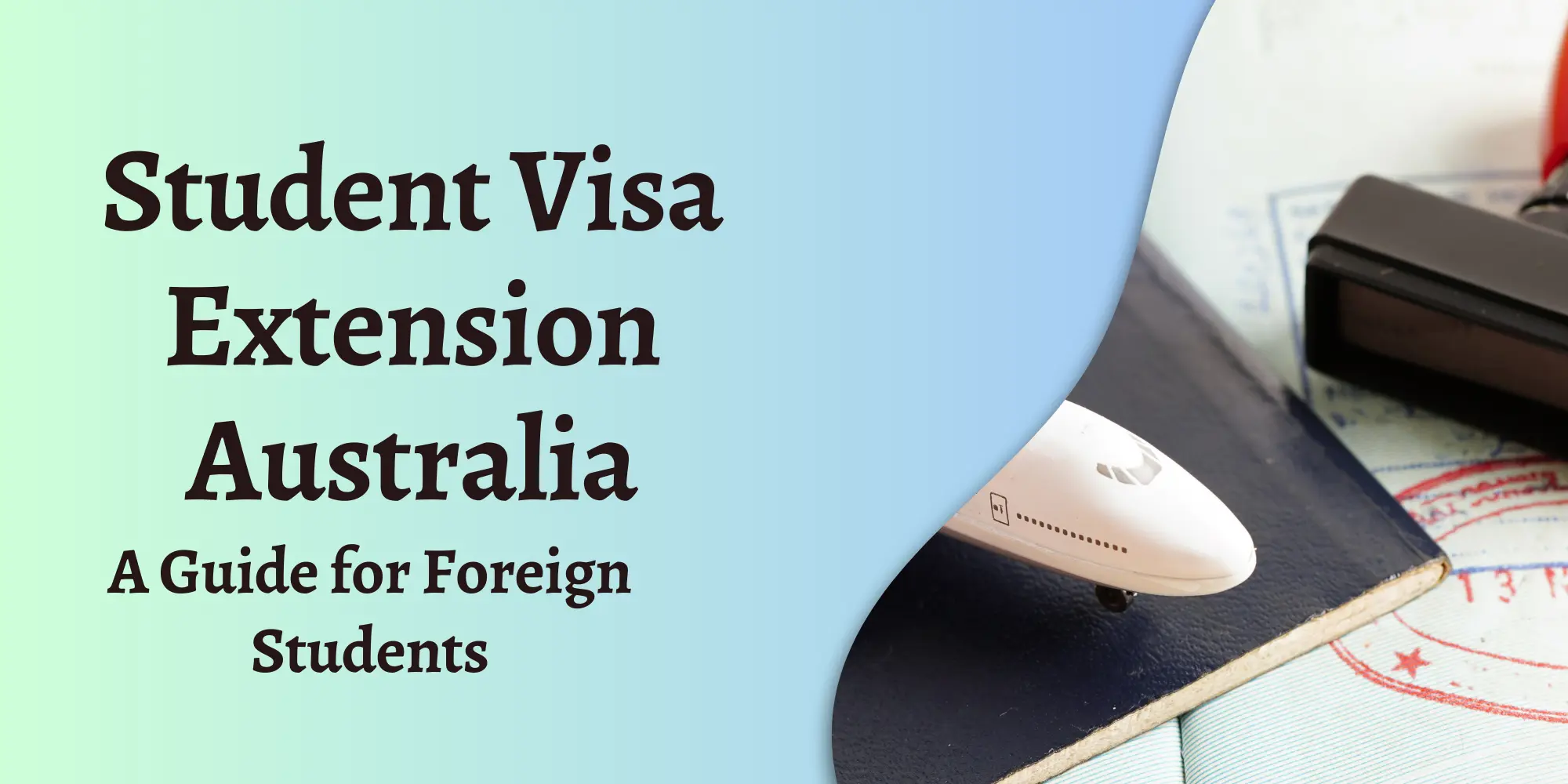Need more time to finish your current course, or are you looking to enroll in a new one? You must apply for a Student visa extension in Australia before your existing student visa expires.
The process is pretty straightforward and follows similar steps to when you applied for your initial Student visa 500. Read further to learn the steps as well as the latest updates on student visas.
Latest updates on Australian student visas
Following the launch of the Migration Strategy for 2024, Australia is rolling out new rules for student visas. The changes will cover the following key points:
- A genuine student test will replace the existing, genuine temporary entrant. This aims to identify students genuinely committed to studying in Australia and refuse those using the student visa route primarily to seek work or stay in Australia indefinitely.
- The required IELTS test (or equivalent) score for student visas will be raised from 5.5 to 6.0 (4.5 to 5.0 for those taking an English Language Intensive Course for Overseas Students or ELICOS)
- Student visa processing times will be determined based on the education provider’s risk levels. Institutions with lower risk levels will be given higher priority in visa processing.
The specific date for these changes isn’t defined and could take effect immediately upon the department’s announcement.. Existing visa policies still apply.
Stay connected to stay on top of the latest Australian immigration news and updates.
Reasons to apply for a student visa extension
If you’re in one of the following situations, you can apply for a student visa 500 extension:
- You aren’t able to complete your course before your visa expires, due to:
- Failed subjects
- Reduced study load
- Personal circumstances (health, family emergencies, etc.)
- You’re enrolling in a new course of study.
- The duration of your course has been extended, and your visa will expire before completion.
- You’ve submitted your graduate research thesis, but your current student visa will expire before marking is completed.
- Your graduate research application has been extended.
How to apply for a student visa extension in Australia?
Step 1: Secure new CoE
Applying for a Confirmation of Enrolment (CoE) is usually done through your education provider’s online portals, although in some cases, you might need to speak directly with the designated university personnel.
To avoid any confusion, you can seek guidance from a trusted migration agency. They’ll give you the right information on how to reach your education provider and ensure you process your CoE within the necessary timeframes.
Step 2: Renew OSHC policy
Most likely, the length of your current Overseas Student Health Cover (OSHC) won’t cover your extended stay. You must renew your OSHC policy with your existing provider or a new one, making sure it aligns with the length of your course.
You can also let your school or university handle the OSHC renewal for you.
If you’re already in Australia, make sure there are no gap months between your new OSHC and your previous health insurance. If outside Australia, make sure your OSHC starts as soon as you arrive in Australia, not when the course starts.
Step 3: Secure other necessary documents
Apart from the CoE and OSHC, you must gather other necessary documents, which include the following:
- A certified copy of your birth certificate
- National identity card
- Driver’s license
- Employment history (e.g. resume or CV), if applicable
- Marriage certificate, if applicable
- Proof of financial capacity, including proof of access to these funds
H4: Proof of Financial Capacity
You must show that you can cover your living costs and expenses while you’re studying in Australia. This includes:
- travel costs
- tuition fees
- living expenses for you and your family members for at least 12 months
- school costs for any school-aged dependents.
Acceptable funding sources include:
- Your partner’s or parents’ annual income. Make sure to include information like their employment history, annual income, and/or assets.
- Government loans and scholarships
- Corporate sponsorships
H4: Proof of Access to Funds
If a partner, parent, or another person or entity is funding your studies in Australia, make sure to show proof that you have genuine access to those funds.
You can present past records of financial support, money deposits or transfers, and so on.

Step 4: Apply for student visa via ImmiAccount
Log in to your ImmiAccount and start a new student visa application.
Fill out the application form completely and upload all supporting documents as specified by the ImmiAccount system.
As part of the student visa application, you must write a Genuine Temporary Entrant (GTE) statement to show that your true intention for going to Australia is solely to study and that you plan to return home once your studies are complete.
After lodging your application, check for any notifications regarding additional checks, such as biometrics and health exams. Specific instructions will be provided by the ImmiAccount system for your reference.
H4: Student visa extension Australia fee
The base application fee is AUD1600.00.
This does not include charges for family members who will be applying with you, as well as costs for the necessary health and character checks.
Note: You may be eligible for a student visa fee waiver if you had a student visa on or after February 1, 2020 and weren’t able to finish your course on time because of the impacts of COVID-19.
According to the department, the fee waiver is only applicable for:
- postponement or leave of absence due to travel restrictions
- postponement due to education provider being unable to deliver the course
- being forced to switch to part-time study because the education provider did not offer or cancel the requisite courses
- being unable to complete the practical component of your course (provider initiated)
To apply, fill out and attach a completed Form 1545 COVID-19 Impacted Student from your education provider.
H4: Student visa extension Australia processing time
Processing times for student visas range from 2 to 12 weeks.
Note that this is just an estimate based on the number of visas previously approved by the Department of Home Affairs. While there is no fixed duration, make sure you complete your application thoroughly and accurately to minimise potential delays.
Step 5: Check email for visa application updates
Regularly check your email for any updates from the Department of Home Affairs regarding the approval of your student visa application.
Once granted, you can confirm your visa status by doing a quick VEVO check. With VEVO, you can see details such as the expiration date of your visa and specific visa conditions you must always follow.
When to apply for an Australia student visa extension?
Apply for your new student visa about 6 to 9 weeks before your current visa expires.
If you are applying inside Australia, you’ll receive a bridging visa (either bridging visa A or B) for you to legally stay in Australia in case your current visa expires and your student visa extension is still processed.
However, if you’re applying offshore, you can only enter the country once you’re student visa is approved.
Apply for a student visa today!
TL;DR Australia student visa extension checklist
Make sure to collect all these student visa extension Australia requirements:
- New Confirmation of Enrollment (CoE)
- Extended Overseas Student Health Cover (OSHC)
- Genuine Temporary Entrant (GTE) statement, including employment history and educational background
- Identity documents, including birth certificate, national ID, driver’s license
- Marriage certificate, if applicable
- Proof of financial capacity to fund your (and your family’s) stay in Australia
- Proof of genuine access to funding
Explore other visa options to extend your stay in Australia
There could be other visa pathways more suitable for your situation than a student visa extension. Whether it’s a family visa, partner visa, or skilled visa, KBA Global can help you understand the best choice for your specific case.
Schedule a free consultation today to find out which visa is the right fit for you.
Disclaimer: The above information is a general guide and not professional immigration advice. Be aware that immigration laws and regulations can change swiftly, potentially rendering some or all of the information outdated. Thus, before using the information above, we recommend checking the current laws with assistance from a migration agent or the Department of Home Affairs website.

